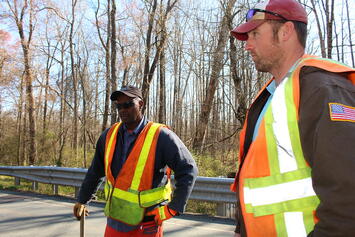
While topics like “The Great Resignation” and “the labor shortage” have gained traction in popular discourse, much of these discussions overly simplify trends that have been brewing for decades. Indeed, some states like South Dakota, Nebraska, Vermont, Kansas and Indiana¹ face a shortage of workers, and it is true that in the aggregate, some types of workers –namely younger workers– are trending toward a type of work that is different from that of their parents’ generation, preferring a lifestyle near affordable amenities and a flexible work schedule. Yet, these narratives often leave out the reality that (1) this shift predates the pandemic and that (2) there are, in fact, some opportunities within its wake if policymakers and firms can capitalize on these changes.
This report first attempts to add clarity to some common perceptions of the labor market:
- What are the demographic and economic shifts we are seeing? On this front, we explore how male labor participation, for example, is dropping at higher rates than female and how declining birth rates transnationally make this problem not only unique to the U.S.
- What do we make of the “revolt against work” attitudes of young people? While many young people have expressed a reluctance to take low wages and face uncertainty, we are seeing the current usual median weekly wage rise for full-time workers. This disruption is particularly marked toward the lower-end of the job spectrum in industries such as hospitality, entertainment and retail suffering the most.
- What are the effects of the changing, high volatile labor market? The pandemic accelerated the prevalence (and fear of) of artificial intelligence in the labor market. Yet, long-term the data shows that the most vulnerable jobs will actually be the “laptop” class while professions such as plumbing and machine maintenance cannot be automated away.
- Where are these shortages the worst? Unlike white-collar business service or tech firms, manufacturing and healthcare businesses need workers with specialized skills who can’t do their jobs remotely and require training as well. Here is where we see the most opportunity. Many heartland states like Nebraska, Minnesota and Ohio have invested in job training programs and pipelines for crucial industries.
What does this mean for opportunity in the heartland and how can policymakers capitalize on this trend?
- Investments in training initiatives, even those thought to be declining industries, will pay off. The labor shortage could provide opportunities for advancement even in some of the hardest hit, most economic vulnerable populations of the heartland. New training initiatives in the St. Louis area, for example, are providing practical skills training in places like East St. Louis, Illinois, and the inner city on the other side of the Mississippi, with particular emphasis on construction and solar installation skills.
- Quality of life and ability to attract talent is becoming a potentially positive differentiator for the heartland. The growing gap in costs, plus greater opportunity, is driving a critical demographic shift toward the middle of the country. Long dismissed as primarily an aging region that people are leaving, the heartland has gotten relatively younger and now has about the same age profile as the rest of the country.
- Policymakers should learn how to tap into the region’s growing foreign-born population. Immigrants, including recent refugees from Afghanistan, have become key targets for manufacturers across the region, in cities such as St. Louis, which have become recent havens. These newcomers, like other recent immigrants, are heading to these labor-short, lower-cost cities rather than high-cost, deindustrializing states like California. This willing labor force will need to be matched with training, childcare needs and for some acquisition of English.
1) https://www.westernjournal.com/5-states-experiencing-worst-labor-shortage/
Download/read the full report.
Heartland Forward is a nonpartisan, nonprofit "think and do tank" that focuses on improving economic performance in the center of the United States by advocating for fact-based solutions to foster job creation, knowledge-based and inclusive growth, and improved health outcomes.
Photo: NCDOT Communications via Flickr under CC 2.0 License.













let's read more
about the Heartland closing the age-profile gap, and whether immigration shifts have played a major role in that.